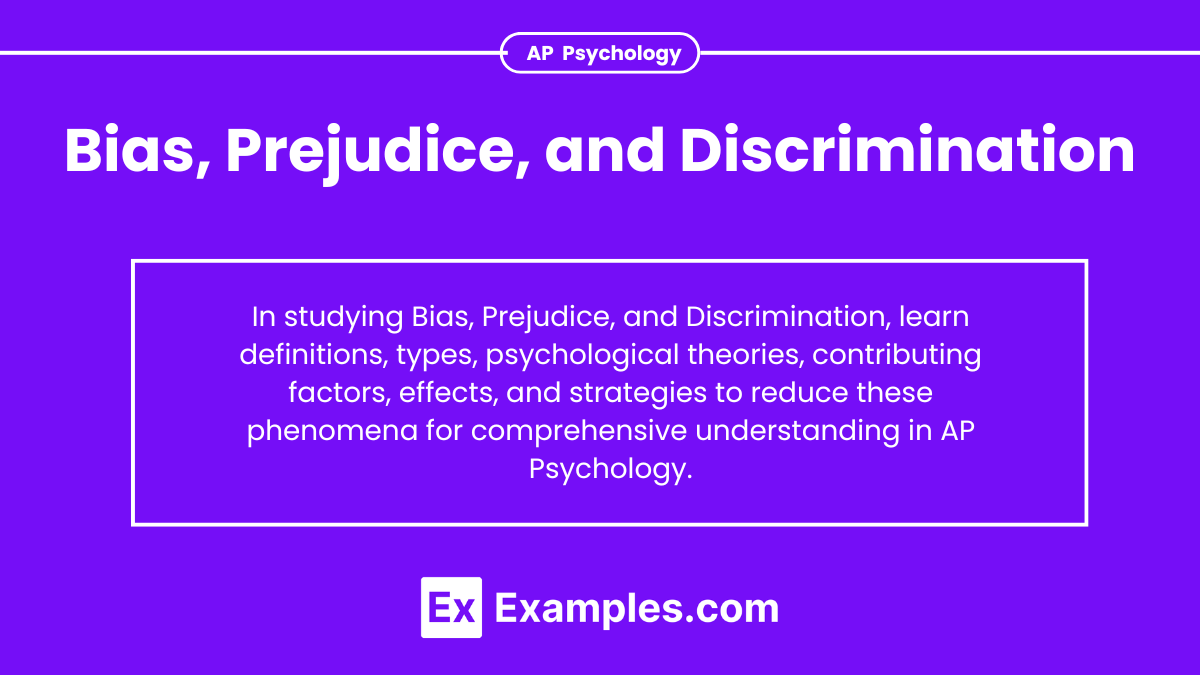In understanding bias, prejudice, and discrimination, a crucial topic in AP Psychology, you will analyze human behavior and social interactions. Bias refers to an unfair preference or aversion towards something or someone. Prejudice involves preconceived negative judgments or feelings towards a group. Discrimination is the unfair treatment of individuals based on group membership. These concepts are interrelated, with bias often leading to prejudice, which in turn can result in discriminatory actions. Studying these phenomena helps in recognizing and addressing social inequalities.
Learning Objectives
In studying Bias, Prejudice, and Discrimination, you should learn to define and differentiate these concepts, recognize their forms and examples, understand their psychological underpinnings through theories such as social identity and realistic conflict, and identify factors contributing to their development. Additionally, focus on the effects of prejudice and discrimination, including stereotype threat and social inequality, and explore strategies to reduce them, such as intergroup contact and cognitive interventions.
Bias

Definition: Bias refers to a tendency to think, feel, or act in a particular way, often resulting in unfair treatment of people based on preconceived notions. Bias can be conscious (explicit) or unconscious (implicit).
Types of Bias:
- Confirmation Bias: The tendency to search for, interpret, and remember information that confirms one’s pre-existing beliefs.
- In-group Bias: The tendency to favor members of one’s own group over those of other groups.
- Self-serving Bias: The tendency to attribute positive outcomes to internal factors (e.g., skill, effort) and negative outcomes to external factors (e.g., luck, others’ actions).
Examples:
- Assuming that someone is more competent based on their appearance.
- Giving more favorable evaluations to employees who share similar interests.
Impact of Bias:
- Can lead to systematic errors in judgment.
- Influences Decision Criteria processes, often leading to unfair outcomes.
Prejudice
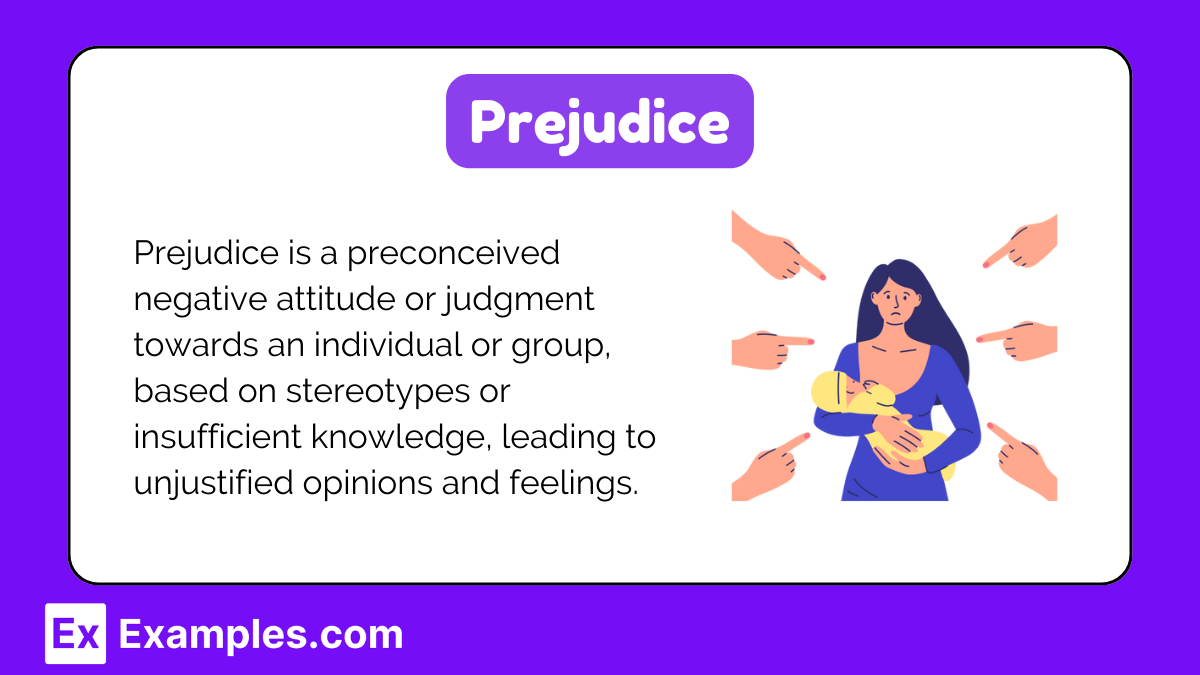
Definition: Prejudice is a preconceived opinion or attitude about an individual or group, often based on stereotypes. It is usually negative and not based on reason or actual experience.
Components of Prejudice:
- Cognitive Component: Beliefs or thoughts about a group (e.g., stereotypes).
- Affective Component: Emotions or feelings towards a group (e.g., fear, hatred).
- Behavioral Component: Predispositions to act in certain ways towards a group.
Sources of Prejudice:
- Socialization: Learned attitudes from family, peers, and media.
- Economic Competition: Perceived threats to economic resources.
- Scapegoating: Blaming a group for broader societal problems.
Examples:
- Racial prejudice: Believing that people of a certain race are inferior.
- Gender prejudice: Assuming that one gender is better suited for certain tasks.
Impact of Prejudice:
- Leads to social inequalities and conflicts.
- Affects mental and physical health of the targeted individuals.
Discrimination
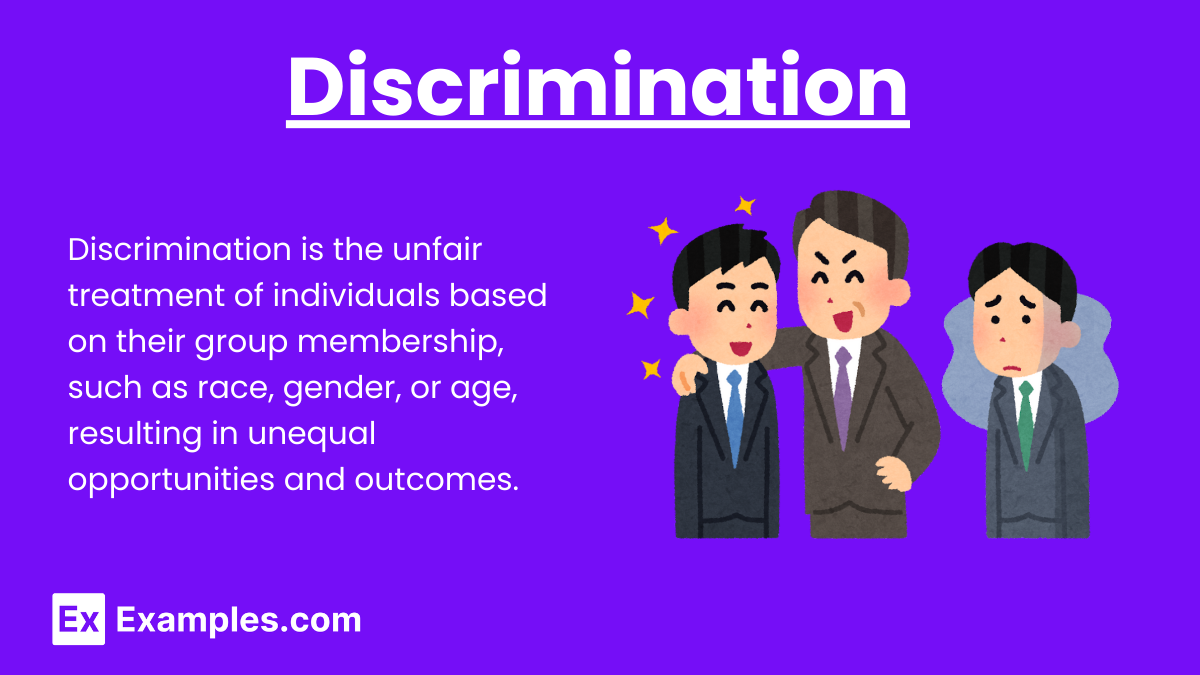
Definition: Discrimination involves actions or behaviors that result from prejudiced attitudes and lead to unfair treatment of individuals or groups based on characteristics such as race, gender, age, or sexual orientation.
Types of Discrimination:
- Direct Discrimination: Overt actions that discriminate against individuals (e.g., refusing to hire someone based on race).
- Indirect Discrimination: Policies or practices that appear neutral but disadvantage a particular group (e.g., requiring a dress code that conflicts with cultural attire).
- Institutional Discrimination: Systemic policies and practices within institutions that result in unequal treatment (e.g., racial profiling in law enforcement).
Examples:
- Workplace discrimination: Denying promotions to individuals based on gender.
- Housing discrimination: Refusing to rent property to someone based on their ethnicity.
Impact of Discrimination:
- Limits opportunities and access to resources.
- Perpetuates social and economic disparities.
Theories Explaining Bias, Prejudice, and Discrimination
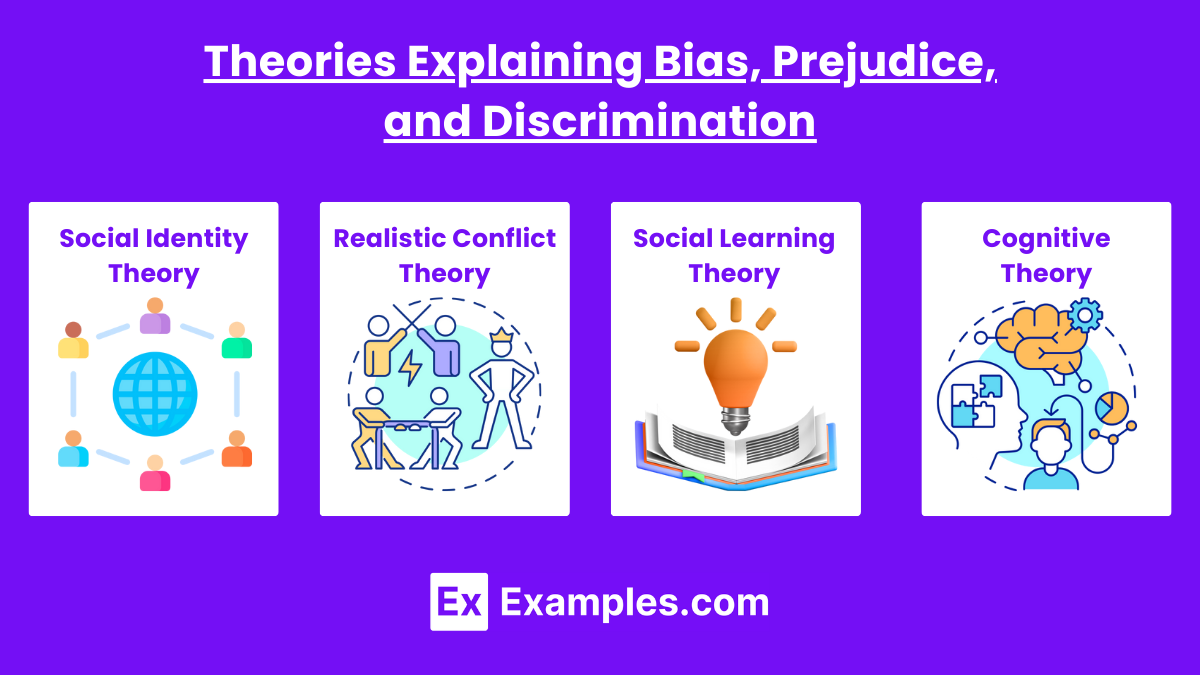
- Social Identity Theory: People derive a sense of identity from the groups to which they belong. Favoring one’s in-group and discriminating against out-groups can enhance self-esteem.
- Realistic Conflict Theory: Prejudice and discrimination arise from competition over limited resources. When groups compete for jobs, housing, or social status, hostility and bias can increase.
- Social Learning Theory: Prejudice and discrimination are learned behaviors. Observing and imitating the attitudes and actions of others, especially authority figures, can reinforce these behaviors.
- Cognitive Dissonance Theory: When people hold contradictory beliefs or attitudes, they experience psychological discomfort (dissonance). To reduce this discomfort, they may change their attitudes or behaviors, sometimes leading to rationalization of biased or prejudiced views.
Strategies to Reduce Bias, Prejudice, and Discrimination
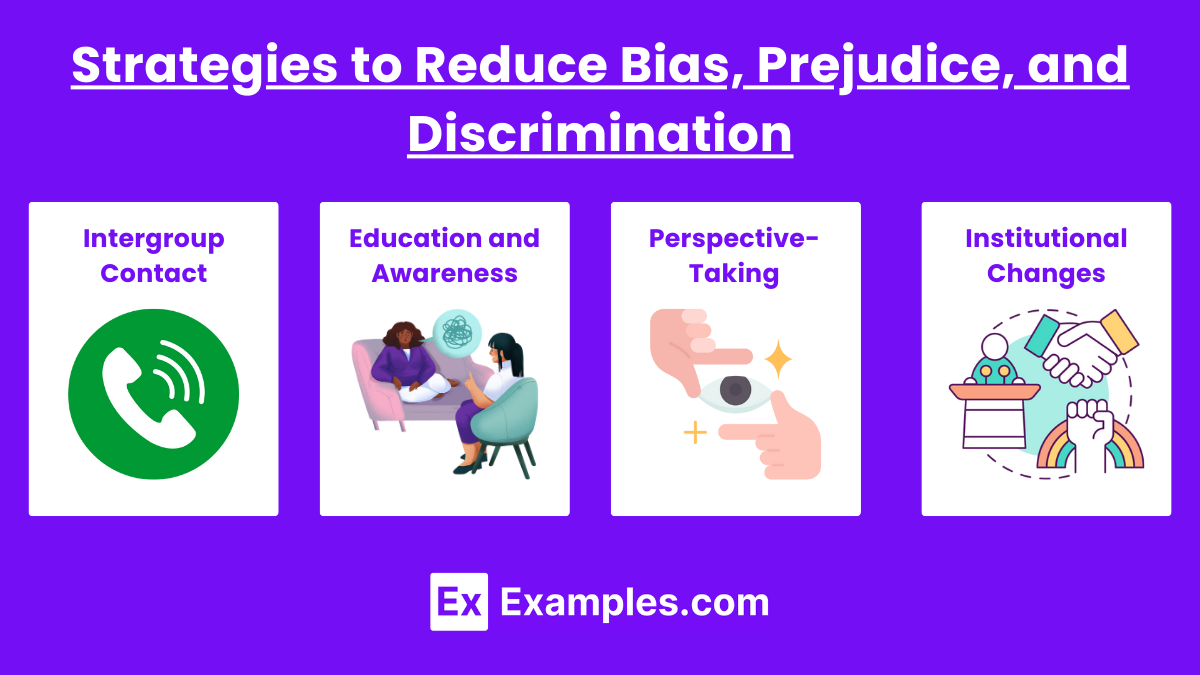
- Intergroup Contact: Promoting direct interaction between members of different groups can reduce prejudices. This is most effective when groups have equal status and work towards common goals.
- Education and Awareness: Increasing Self Awareness about the sources and impacts of bias and prejudice can lead to more conscious efforts to avoid discriminatory behavior.
- Perspective-Taking: Encouraging individuals to see situations from the viewpoints of others can reduce stereotyping and increase empathy.
- Institutional Changes: Implementing policies and practices that promote diversity and inclusion can reduce institutional discrimination.

